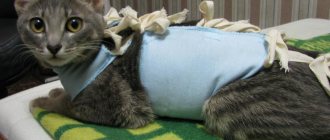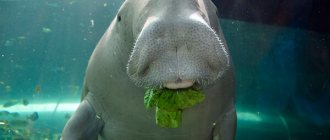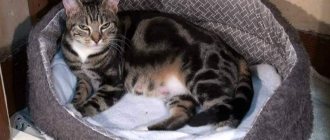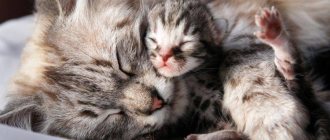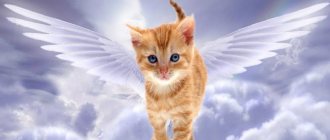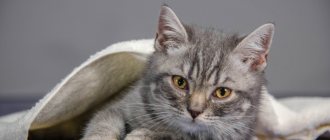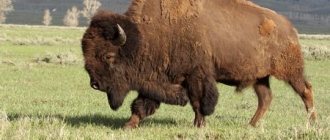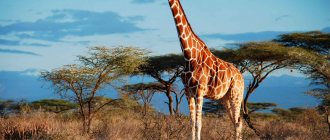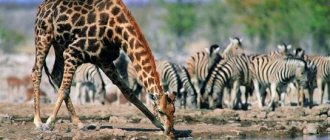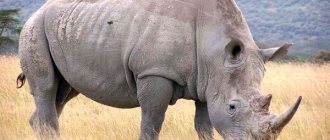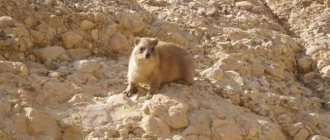- Wild animals
- >>
- Mammals
Dugongs are closely related to the extinct sea cows and living manatees. He is the only representative of the dugong family to survive to us. According to some experts, it was he who was the prototype of the mythical mermaid. The name "dugong" was first popularized by French naturalist Georges Leclerc, Comte de Buffon, after describing an animal from the island of Leyte in the Philippines. Other common names are “sea cow”, “sea camel”, “porpoise”.
Origin of the species and description
Photo: Dugong
The dugong is a long-lived mammal. The oldest recorded individual reached the age of 73 years. The dugong is the only extant species of the family Dugongidae, and one of four species of the order Sirenians, the others forming the family manatees. It was first classified in 1776 as Trichechus dugon, a member of the manatee genus. It was later identified as the type species of Dugong by Lacépède and classified within its own family.
Video: Dugong
Interesting fact: Dugongs and other sirenians are not closely related to other marine mammals, but are more closely related to elephants. Dugongs and elephants share a monophyletic group that includes hyraxes and anteaters, one of the earliest descendants of the placentals.
Fossils indicate the appearance of sirens in the Eocene, where they most likely lived in the ancient Tethys Ocean. The two extant families of sirenians are thought to have diverged in the mid-Eocene, after which dugongs and their closest relative, Steller's cow, split from a common ancestor in the Miocene. The cow became extinct in the 18th century. No fossils exist for other members of the Dugongidae.
The results of molecular DNA studies showed that the Asian population is different from other populations of the species. Australia has two different maternal lines, one of which contains dugongs from Arabia and Africa. Genetic mixing occurred in Southeast Asia and Australia around Timor. There is not yet enough genetic data to establish clear boundaries between the different groups.
Extinction
According to Steineger (Steller's biographer), by 1741, when Steller discovered these mammals, their population size was less than 1,500 individuals. This means that even then sea cows were endangered. Seal hunters and fur traders hunted these animals, and they followed the route used by Vitus Bering's expedition when sea cows were first discovered. In 1754, these mammals were hunted by Ivan Krasilnikov, and later in 1762, Ivan Korovin began to persecute them. Other people who came after 1772, like Dmitry Bragin, did not find sea cows and assumed that they had become extinct.
It has also been argued that the disappearance of sea cows may have been an indirect consequence of the decline in the population of sea otters, which were hunted by Aboriginal people. As the otter population decreased, the number of sea urchins may have increased, which in turn decreased the supply of algae on which the sea cows fed. However, in historical times, Aboriginal hunting only depleted sea otter populations in localized areas, and since the sea cow would have been easy prey for Aboriginal people, available populations could have been decimated with or without simultaneous otter hunting. In any case, the sea cow's habitat was limited to coastal areas and by the time Bering's expedition arrived, the animal was already in danger of extinction.
If you find an error, please select a piece of text and press Ctrl+Enter
.
According to legends and stories of sailors, people learned about mysterious sirens that lured ships to reefs near the coast. Having compared the stories and facts, scientists have come to the conclusion that these are not fictions and the prototypes of the sirens were now extinct mammals from the siren order, which includes dugongs, manatees and sea cows.
Sea cows are herbivorous marine animals that feed on algae. They had a calm disposition and were not at all afraid of people, which is how they earned their name.
Appearance and features
Photo: What a dugong looks like
Dugongs are large, dense mammals with short paddle-like front fins and a straight or concave tail that is used as a propeller. The structure of the tail distinguishes them from manatees, in which it has the shape of an oar. The fins of dugongs resemble those of dolphins, but unlike dolphins, they lack a dorsal fin. Females have mammary glands under their fins. Adult dugongs weigh between 230 and 400 kg and can range from 2.4 to 4 m in length.
The thick skin is brownish-gray and changes color when algae grows on it. All dugongs have fangs, but they are visible only in mature males and old females. The ears do not have valves or petals, but are very sensitive. It is assumed that dugongs have high auditory sensitivity, compensating for poor vision.
The muzzle is quite large, rounded and ends in a cleft. This cleft is a muscular lip that hangs over the recurved mouth and helps the dugong obtain sea grass. A jaw with drooping tips accommodates enlarged incisors. Sensory bristles cover their upper lip, helping them find food. Stubble also covers the dugong's body.
Fun Fact: The only known species in the family Dugongidae is Hydrodamalis gigas (Steller's sea cow), which became extinct in 1767, just 36 years after its discovery. They were similar in appearance and color to dugongs, but were significantly larger in size, with a body length of 7 to 10 m and a weight of 4,500 to 5,900 kg.
The paired nostrils, used for ventilation when the dugong surfaces every few minutes, are located on the top of the head. Valves keep them closed during dives. The dugong has seven cervical vertebrae, 18 to 19 thoracic vertebrae, four to five lumbar vertebrae, at most one sacral vertebrae, and 28 to 29 caudal vertebrae. The shoulder blade is crescent-shaped, the collarbones are completely absent, and even the pubic bone is non-existent.
Species protection
Dugong is highly prized among poachers. Firstly, dugong meat tastes like veal, so among gourmets it is considered an expensive delicacy. Secondly, fat, hide and bones are also used for various purposes, especially for making ivory crafts. Asians use animal body parts for a variety of rituals and medicine. That is why in some habitats these animals have disappeared completely or partially.
Today it is prohibited to catch dugongs with nets, so harpoons are used for catching. It is worth noting that the dugong is protected by the laws of different countries and is listed in the Red Book of the International Union for Conservation of Nature and is considered a “vulnerable species.”
The sea (Steller's) cow - the closest relative of the dugong - was three times larger in size, its weight reached 3,600 kg. The sea cow was discovered in 1741; 27 years later it was completely exterminated.
Where does the dugong live?
Photo: Sea dugong
The dugong's distribution range covers the coasts of 37 countries and territories from East Africa to Vanuatu. Captures warm coastal waters stretching from the Pacific Ocean to the east coast of Africa, covering approximately 140,000 km of coastline. It is believed that their former range corresponded to the range of seagrasses of the pondweed and watergrass families. The full size of the original range is not precisely known.
Currently, dugongs live in the coastal waters of the following countries:
- Australia;
- Singapore;
- Cambodia;
- China;
- Egypt;
- India;
- Indonesia;
- Japan;
- Jordan;
- Kenya;
- Madagascar;
- Mauritius;
- Mozambique;
- Philippines;
- Somalia;
- Sudan;
- Thailand;
- Vanuatu;
- Vietnam, etc.
Dugongs are found along much of the coastline of these countries, with large numbers concentrated in sheltered bays. The dugong is the only purely marine herbivorous mammal, since all other species of manatee use fresh water. Large numbers of individuals are also found in wide, shallow channels around offshore islands where kelp meadows are common.
They are typically found at depths of about 10 m, although in areas where the continental shelf remains shallow, dugongs travel more than 10 km from shore, descending to 37 m where deep-sea sea grasses occur. Deep waters provide refuge from the cool coastal waters in winter.
Now you know where the dugong lives. Let's find out what this animal eats.
Animal behavior and lifestyle
Most of the time, mammals moved slowly through shallow water, resting on the bottom with flippers. This is how they got their food. The backs of cows were always above the water and became a source of food for birds, which obtained crustaceans from the folds of the skin.
- Family connections. Cabbage farmers gathered in large herds. Adults surrounded the young and the animals’ attachment to each other was quite strong. Steller's cows came close to the shore, and their family affection could be observed. The male and female were always accompanied by the cubs of the current and previous year. If the female died, then the male and cubs swam to her body within three days.
- Reproduction. Little is known about how sea cows reproduced. Steller described that the mating season occurred in the spring and the animals were monogamous, that is, mating took place with one partner, whom the female chose from several contenders.
- Caring for offspring. Gestation of the cub lasted about a year. The newborn Steller calf weighed about thirty kilograms and reached one and a half meters in length. For the first two years, the female constantly follows the cub and teaches him to live independently. And after the allotted time, the grown manatees begin an independent life, but scientists have proven that the family connection with the mother continues throughout life.
- Nutrition. The diet of sea cows consisted of various algae, but the main delicacy was seaweed. Hence the name - “cabbage”. While foraging, the animals submerged their heads under water for a while, and when they emerged for air, they made snorting sounds. In winter, mammals lost a lot of weight and their ribs were visible under their skin.
When resting, the cows lay on their backs and drifted motionless in the coastal waters. Cabbage plants were slow-moving, and their life expectancy reached 90 years.
.
Top Articles: Natural Resources of North America
Scientists were unable to identify natural enemies, but it is known that many representatives became victims of natural elements. They crashed on rocks during a storm and died under the ice in winter.
The main destroyer of Steller's cows was man. It was easy to hunt animals because they allowed people to approach them without fear. From one individual it was possible to obtain more than three tons of meat, which was enough to feed a tribe of 35 people for a month.
What does the dugong eat?
Photo: Dugong from the Red Book
Dugongs are exclusively herbivorous marine mammals and feed on algae. These are mainly carbohydrate-rich rhizomes of sea grasses that are based on the soil substrate. However, they feed not only on the underground parts of plants, which are often swallowed whole. They often graze at a depth of two to six meters. However, the typical flat, winding furrows or gullies they leave when grazing were also found at a depth of 23 meters. To get to the roots, dugongs have developed special techniques.
They reach the roots in the following sequence of movements:
As the horseshoe-shaped upper lip advances, the top layer of sediment is removed, then the roots are freed from the soil, shaken clean and eaten. Prefers tender small sea grasses, which often come from the genera Halophila and Halodule. Although they contain little fiber, they contain many easily digestible nutrients. Only certain seaweeds are suitable for consumption due to the animals' highly specialized diet.
Interesting fact: There is evidence that dugongs actively influence changes in seagrass species composition at the local level. Feeding tracks were found at a depth of 33 meters, and dugongs were spotted at a depth of 37 meters.
Seagrass patches where dugongs often feed tend to produce more low-fiber, nitrogen-rich plants over time. If seaweed beds are not used, the proportion of fiber-rich species increases again. Although the animals are almost entirely herbivorous, they sometimes consume invertebrates such as jellyfish and mollusks.
In some southern areas of Australia they actively search for large invertebrates. However, this is not typical for individuals from tropical areas, where they do not eat invertebrates at all. They are known to pile up a bunch of plants in one place before eating.
History of discovery
Sketch of a female Steller's cow, described and measured by G. Steller. Considered to be the only depiction of a cow made from life
Steller's sea cow. Drawing by Sven Waxel
People first saw sea cows in November 1741 (except for hypothetical contacts with them by prehistoric inhabitants of Asia and North America and/or later aboriginal tribes of Siberia), when Commander Vitus Bering's ship "St. Peter", making an expeditionary voyage, was wrecked at attempt to anchor off the island, later named after Bering.
Georg Steller, the expedition's naturalist and doctor, was the only specialist with a natural science background who personally saw and described this species. After the shipwreck, he noticed from the shore in the sea several large oblong objects, similar from a distance to the bottoms of overturned boats, and soon realized that he had seen the backs of large aquatic animals. However, the first cow was obtained by the people from this expedition only at the end of their ten-month stay on the island, six weeks before departure. Eating the meat of sea cows greatly helped travelers, maintaining their strength during the labor-intensive construction of a new ship.
Most of the later reports are based on Steller's De bestiis marinis, first published in 1751. Steller believed that he was dealing with a manatee (Latin Trichechus manatus), and in his notes he identified the sea cow with it, claiming that this is the same animal that in the Spanish possessions in America is called “manat” (Spanish manati
).
The famous German zoologist E. Zimmermann described the sea cow as a new species in 1780. The binomial name Hydrodamalis gigas
(the generic name literally means “water cow”, the specific name means “giant”), was given to the species by the Swedish biologist A. J. Retzius in 1794.
An important contribution to the study of the sea cow was made by the American zoologist of Norwegian origin, Steller’s biographer Leonard Steineger, who conducted research on the Commanders in 1882-1883 and collected a large number of bones of this animal.
Features of character and lifestyle
Photo: Common dugong
The dugong is a highly social species, found in groups of 2 to 200 individuals. Smaller groups usually consist of a mother and child pair. Although herds of two hundred dugongs have been observed, these are unusual for these animals as kelp beds cannot support large groups for long periods of time. Dugongs are a semi-nomadic species. They can migrate long distances to find a particular seagrass bed, but they can also live in one area for most of their lives when food is plentiful.
Fun fact: Animals breathe every 40-400 seconds while grazing. As the depth increases, the duration of the breathing interval also increases. They sometimes look around while breathing, but usually only their nostrils poke out of the water. Often, when they exhale, they make a sound that can be heard quite far away.
Movement depends on the quantity and quality of their main food source, algae. If local seagrass meadows are depleted, they look for the next ones. Because dugongs are usually found in murky waters, they are difficult to observe without disturbing them. If their peace is disturbed, they quickly and secretly move away from the source.
The animals are quite shy, and if approached cautiously, they will examine a diver or boat from a great distance, but are hesitant to approach closer. Because of this, little is known about the behavior of dugongs. They communicate by chirping, trilling and whistling. Through these sounds, animals are warned of dangers or maintain contact between the cub and the mother.
Nutrition
Coastal waters and shallow waters are considered a comfortable habitat for dugongs, so they rarely go out to the open sea. The main occupation of these animals, which takes up almost all their free time, is feeding. They feed in shallow waters and in coral reefs at a depth of 1-5 m. Most of all they love seaweed and aquatic plants. They grab food with their fleshy lips and then rise to the surface to inhale. This animal consumes up to 40 kg of aquatic vegetation per day!
They prefer to live alone, but go out to feed in groups of 3-6 animals. They do not like to migrate, so they prefer a sedentary lifestyle. Some animals undergo seasonal movements, which are influenced by water level and temperature, food availability, and human disturbance. The speed of dugongs is unimpressive - 10 km/h, but in a state of fear they accelerate to 18 km/h. When swimming, they use their tail and fins.
Dugongs are very quiet animals. Only the lucky ones can hear their whistle. They only make it when they are scared or excited. They see very poorly, but their hearing is quite well developed. Dugongs cannot live in captivity.
Social structure and reproduction
Photo: Baby dugong
Mating behavior varies slightly depending on location. Male dugongs defend their territories and change their behavior to attract females. After attracting females, male dugongs go through several stages to copulate. Groups of males follow a single female, attempting to copulate.
The fighting phase consists of splashing water, tail strikes, body throws and lunges. This can be violent, as evidenced by the scars seen on the body of females and competing males. Mating occurs when one male moves the female from below while more males continue to compete for that position. Consequently, the female copulates several times with competing males, which ensures conception.
Female dugongs reach sexual maturity at 6 years of age and can have their first calf between 6 and 17 years of age. Males reach sexual maturity between 6 and 12 years of age. Reproduction can occur year-round. The reproduction rate of dugongs is very low. They only produce one young every 2.5-7 years depending on location. This may be due to the long gestation period, which ranges from 13 to 14 months.
Interesting fact: Mothers and calves form a close bond that is strengthened through prolonged periods of suckling, as well as through physical touching during swimming and nursing. Each female spends about 6 years with her young.
At birth, the cubs weigh about 30 kg and are 1.2 m long. They are very vulnerable to predators. Calves are nursed for 18 months or longer, during which time they remain attached to their mother, often riding on her back. Although baby dugongs can eat sea grass almost immediately after birth, the suckling period allows them to grow much faster. When they reach maturity, they leave their mothers and seek out potential mates.
Appearance and structure
Appearance and structural features
Steller's cow skull
The appearance of the cabbage cow was characteristic of all sirens, with the exception that the Steller's cow was much larger than its relatives in size. The animal's body was thick and ridged. The head was very small in comparison with the size of the body, and the cow could freely move its head both to the sides and up and down. The limbs were relatively short, rounded flippers with a joint in the middle, ending in a horny growth, which was compared to a horse's hoof. The body ended in a wide horizontal tail blade with a notch in the middle.
The skin of the Steller cow was bare, folded and extremely thick and, as Steller put it, resembled the bark of an old oak tree. Its color ranged from gray to dark brown, sometimes with whitish spots and stripes. One of the German researchers who studied a preserved piece of Steller cow leather found that in terms of strength and elasticity it is close to the rubber of modern car tires. Perhaps this property of the skin was a protective device that saved the animal from injury from stones in the coastal zone.
The ear openings were so small that they were almost lost among the folds of skin. The eyes were also very small, according to eyewitness descriptions - no larger than those of a sheep. The soft and mobile lips were covered with vibrissae as thick as the shaft of a chicken feather. The upper lip was not bifurcated. The Steller cow had no teeth at all. The cabbage hawk ground its food using two white horny plates (one on each jaw). There were, according to various sources, 6 or 7 cervical vertebrae. Judging by the skeletons found, there were about 50 vertebrae in the spine (not counting the thoracic one).
Dental plates of a Steller's cow (drawing ok.g.)
The presence of pronounced sexual dimorphism in the Steller cow remains unclear. However, males were apparently somewhat larger than females.
Steller's cow made virtually no sound signals. She usually only snorted, exhaling air, and only when wounded could she make loud moaning sounds. Apparently, this animal had good hearing, as evidenced by the significant development of the inner ear. However, the cows hardly reacted at all to the noise of the boats approaching them.
Size
Steller's cow was a very large animal. Steller himself, who described the female cow in detail, estimated her body length at 295 inches (about 7.5 m). The longest documented length of a sea cow is 7.88 m. The female, 7.42 m long, had a neck and nape circumference of 204 cm, a body circumference at shoulder level of 3.67 m, and a largest body circumference in the middle at the back of the belly of 6.22 m. , the length of the tail from the anus to the caudal lobes is 192.5 cm, the circumference of the caudal peduncle at the origin of the lobes is 143 cm, the distance between the ends of the caudal lobes is 199 cm. It has been suggested that the length of sea cows could be noticeably greater, but some scientists believe that 7.9 m was already the upper limit; however, a length of 9-10 m is also called. The girth of the female, measured by Steller, had 22 feet (6.6 m).
As for the body weight, it was very significant - on the order of several tons. Different sources give varying figures: about 4 tons, 4.5-5.9 tons, up to 10 tons or from 5.4 to 11.2 tons, that is, the Steller's cow could be even heavier than the African elephant. The weight of the female, measured by Steller, was about 3.5 tons. In any case, Steller's cow was apparently in first place in weight among all mammals that led an aquatic lifestyle, with the exception of cetaceans (exceeding in average weight even such a giant as the southern sea Elephant).
Best articles: What insects do people eat?
Natural enemies of dugong
Photo: Dugong
Dugongs have very few natural predators. Their massive size, tough skin, dense bone structure and rapid blood clotting can help with their defenses. Although animals such as crocodiles, killer whales and sharks pose a threat to young animals. One dugong was recorded to have died from trauma after being pierced by a stingray.
In addition, dugongs are often killed by humans. They are hunted by some ethnic tribes in Australia and Malaysia, caught in gill and net nets set by fishermen, and poached from boats and ships. They are also losing habitat and resources due to human activities.
Known predators of dugongs include:
- sharks;
- crocodiles;
- killer whales;
- People.
There was a recorded case where a group of dugongs worked together to drive away a shark that was hunting them. Also, a large number of infections and parasitic diseases affect these animals. Pathogens detected include helminths, cryptosporidium, various types of bacterial infections and other unidentified parasites. It is believed that 30% of dugong deaths are caused by diseases that affect them due to infection.
Dugong and man
Dugongs are hunted for their meat, which tastes like veal, as well as for their fat, skins and bones, which are used for ivory crafts. Some Asian cultures use dugong body parts in traditional medicine. From an animal weighing 200-300 kg, 24-56 liters of fat are obtained. Due to predation and habitat degradation throughout much of its range, the dugong has become rare or extinct. Thus, according to estimates based on the frequency of their catch by nets, its number in the most prosperous part of its range, off the coast of Queensland, decreased from 72,000 to 4,220 animals from 1962 to 1999.
Population and species status
Photo: What a dugong looks like
Five countries/territories (Australia, Bahrain, Papua New Guinea, Qatar and the United Arab Emirates) support significant dugong populations (in the thousands) with tens of thousands in northern Australia. The percentage of mature individuals varies between different subgroups, but ranges somewhere between 45% and 70%.
Genetic information on dugong stocks is mainly limited to the Australian region. Recent work based on mitochondrial DNA shows that the Australian dugong population is not panymic. The Australian population still has high genetic diversity, indicating that recent population declines are not yet reflected in the genetic structure.
Additional data using the same genetic markers indicate significant differentiation between southern and northern Queensland populations. Preliminary population genetic studies of dugongs outside Australia are ongoing. Observations document strong regional differentiation. Australian populations differ from other populations in the western Indian Ocean in their homogeneity and have limited genetic diversity.
There is a special ancestry observed in Madagascar. The situation in the Indo-Malayan region is unclear, but several historical lines may be mixed there. Thailand is home to various groups that may have diverged during the Pleistocene sea level fluctuations but may now be mixing geographically in these regions.
